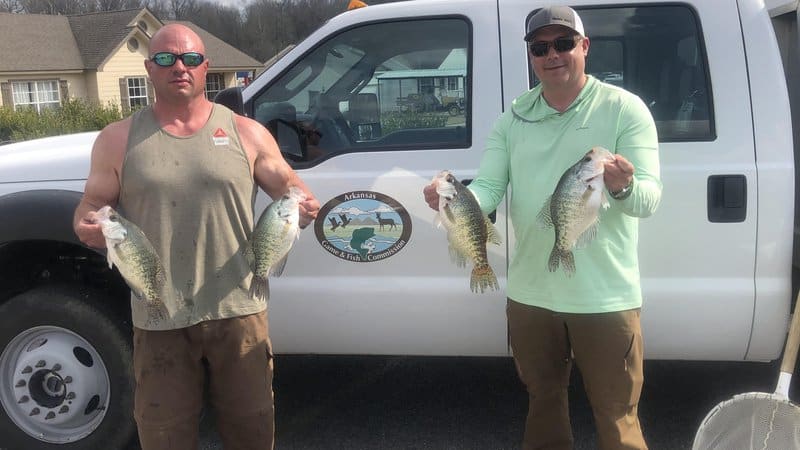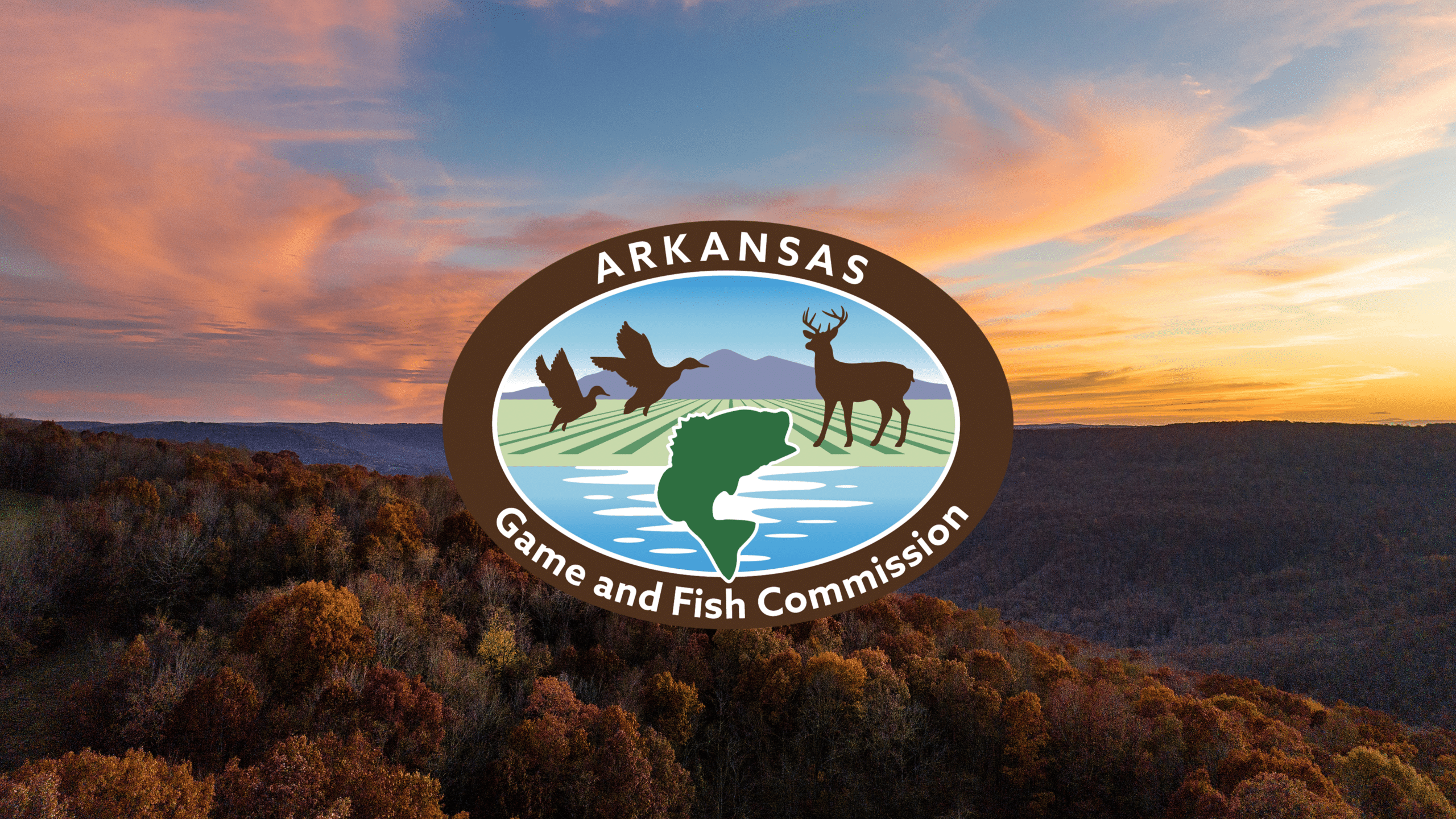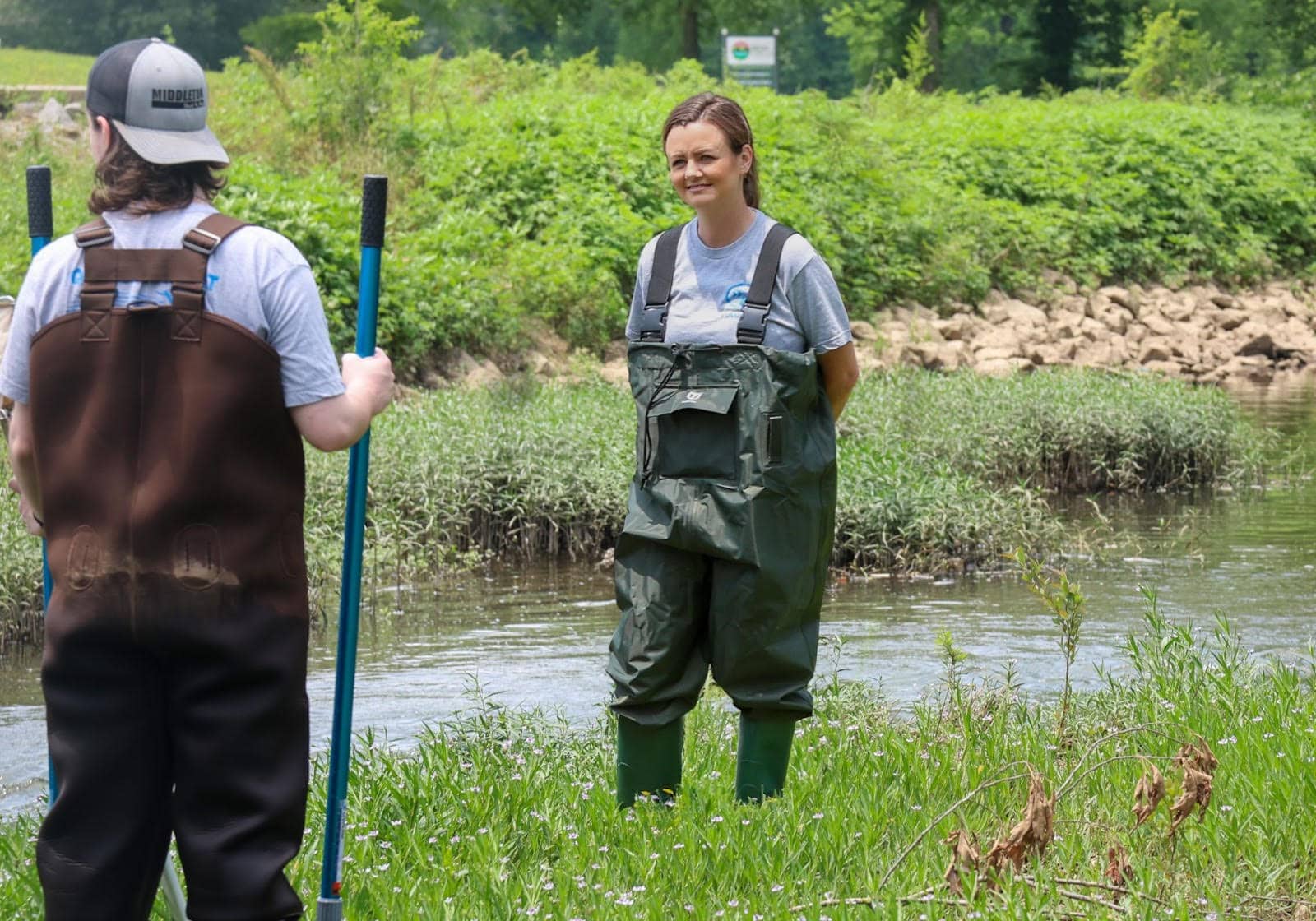Anglers contribute catch to conservation
ON 03-31-2021

March 31, 2021
Randy Zellers
Assistant Chief of Communications
ROGERS — Anglers competing in the Beaver Lake Crappie Series L.O. VanZant Memorial Tournament on Beaver Lake did more than show off their skills last weekend, they also contributed to the future of fishing in northwest Arkansas. Thanks to a partnership between tournament directors and the Arkansas Game and Fish Commission, 130 crappie were placed into the lake’s nursery pond to lay their eggs and produce hundreds of thousands of crappie fingerlings that will be released into the lake later in the year.
Jon Stein, fisheries regional supervisor for the AGFC says nursery ponds can offer increased production for a specific species with little competition or outside influences.
“The nursery pond lets the small crappie grow with very few predators, increasing their hatching and survival rates,” Stein said. “The pond also is fertilized to produce a lot of food for the growing crappie, so they will hopefully get a jump start compared to if they were growing in the lake. This can add to their survival once released in late September when the water cools.”
Stein says black crappie and white crappie were stocked in the 20-acre nursery and will spawn independently with very little hybridization.
“Both species coexist in the lake, so there’s no concern of issues in the nursery pond.”
According to Stein, the Beaver Lake nursery pond has been used since the mid-1980s to boost the reproduction of many species of fish.
“The nursery pond was used to stock smallmouth bass fingerlings when the AGFC established smallmouth in Beaver Lake in the ‘80s,” Stein said. “Bass, walleye, crappie, and recently forage species such as threadfin shad, redear sunfish and bluegill have been stocked using the nursery pond over the years.”
Stein says when this year’s crop of fish is ready to be released into the lake, he hopes to have anywhere from 250,000 to 500,000 fingerlings swimming in its waters. They will be held until the water is cooling down to reduce the stress of stocking, but biologists must balance timing with the size of the fingerlings. As they mature, the larger fingerlings will prey upon some of the smaller ones, reducing the overall numbers, but increasing the size of the fish stocked. Along with these newly produced fingerlings, all of the surviving adult fish will also be released into the lake.
Working with anglers to help collect broodstock is not new for AGFC fisheries biologists. Bass caught during tournaments coordinated by the Arkansas Bass Association were used for years as broodstock to place in nursery ponds at Cummins Unit of the Arkansas Department of Corrections near Gould. Those ponds have been flooded by the Arkansas River so often in the last decade that the program was altered to include fish from the Joe Hogan State Fish Hatchery, but the foundation of anglers and biologists collaborating on stocking programs has remained.
“We’ve stocked largemouth through the Beaver Lake nursery pond using tournament catches as well,” Stein said. “Gathering 400 largemouth from tournament anglers only takes a tournament or two and lets the anglers be a part of the process.”
Recent News

AGFC Commissioner Meeting Notice
Apr. 16, 2024

New AGFC education chief already knows the territory
Apr. 16, 2024
Subscribe to Our Weekly Newsletter E-mails
Don’t miss another issue. Sign up now to receive the AGFC Wildlife Weekly Newsletter in your mailbox every Wednesday afternoon (Waterfowl Reports are published weekly during waterfowl season and periodically outside the season). Fishing Reports arrive on Thursdays. Fill in the following fields and hit submit. Thanks, and welcome!
